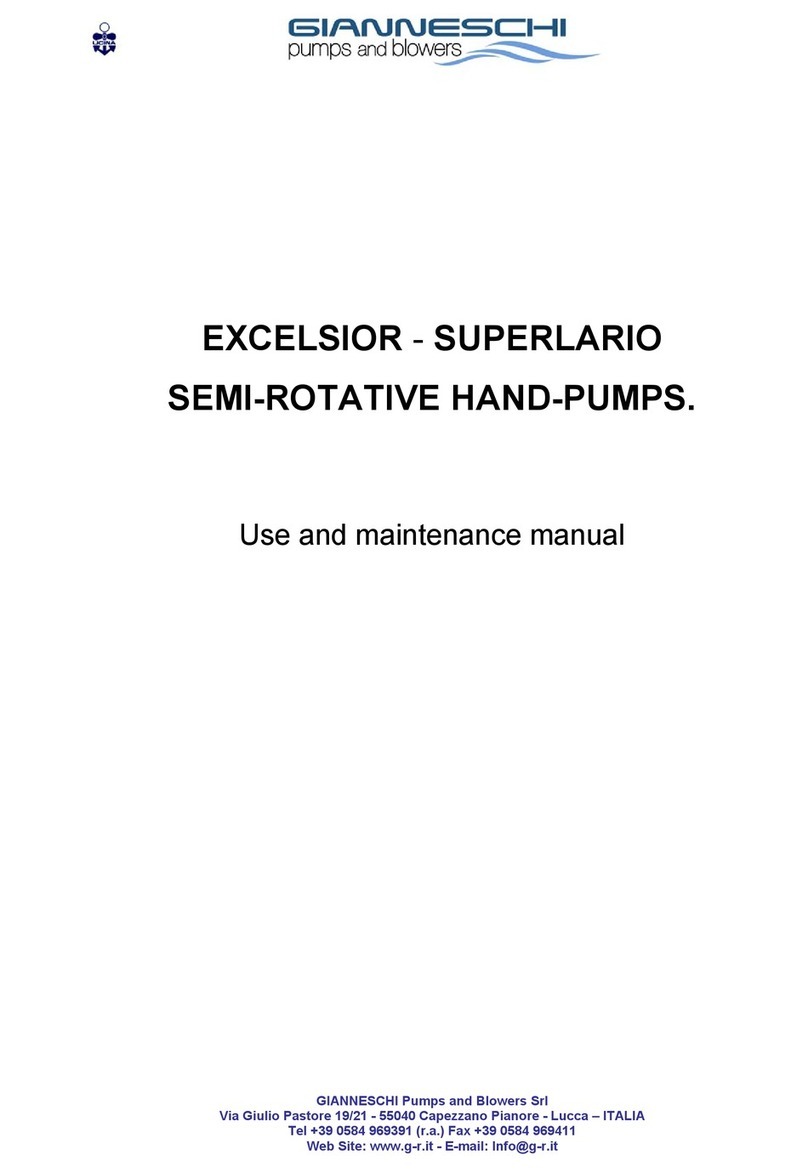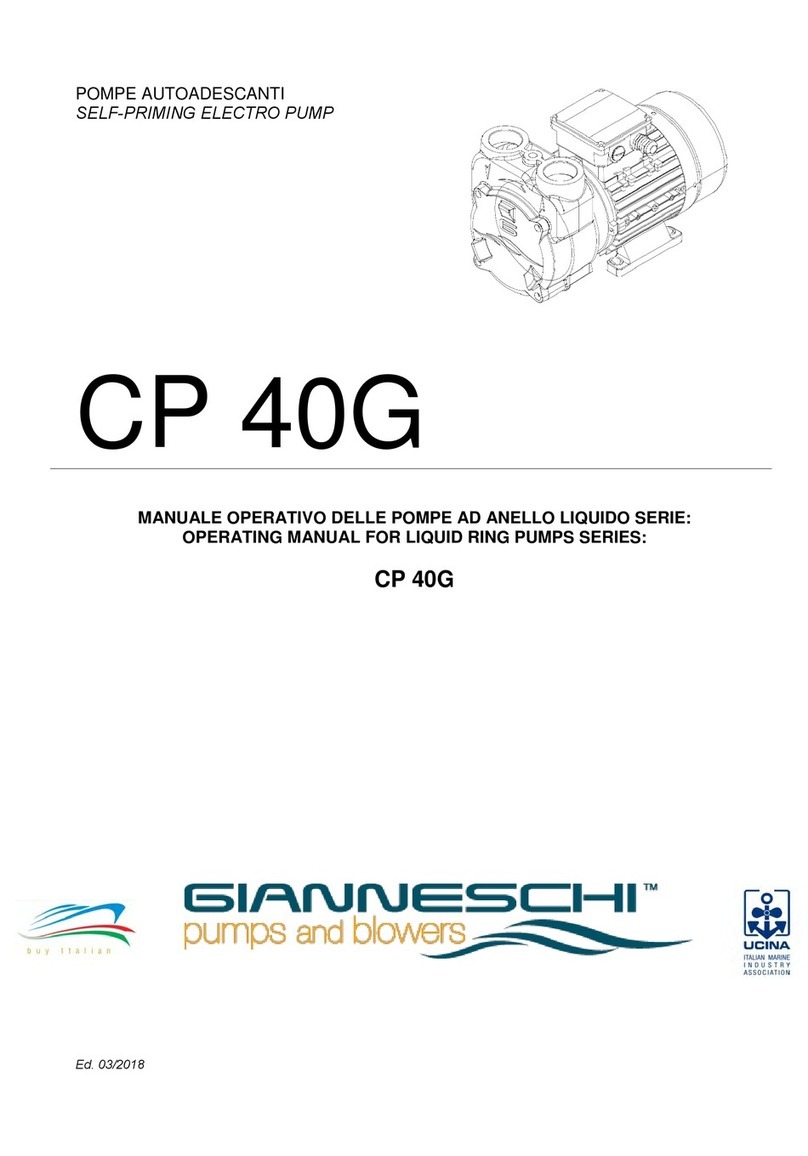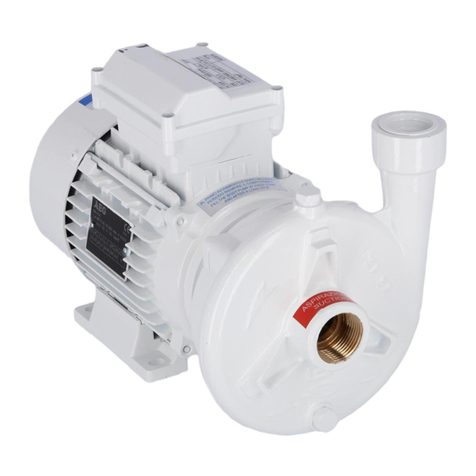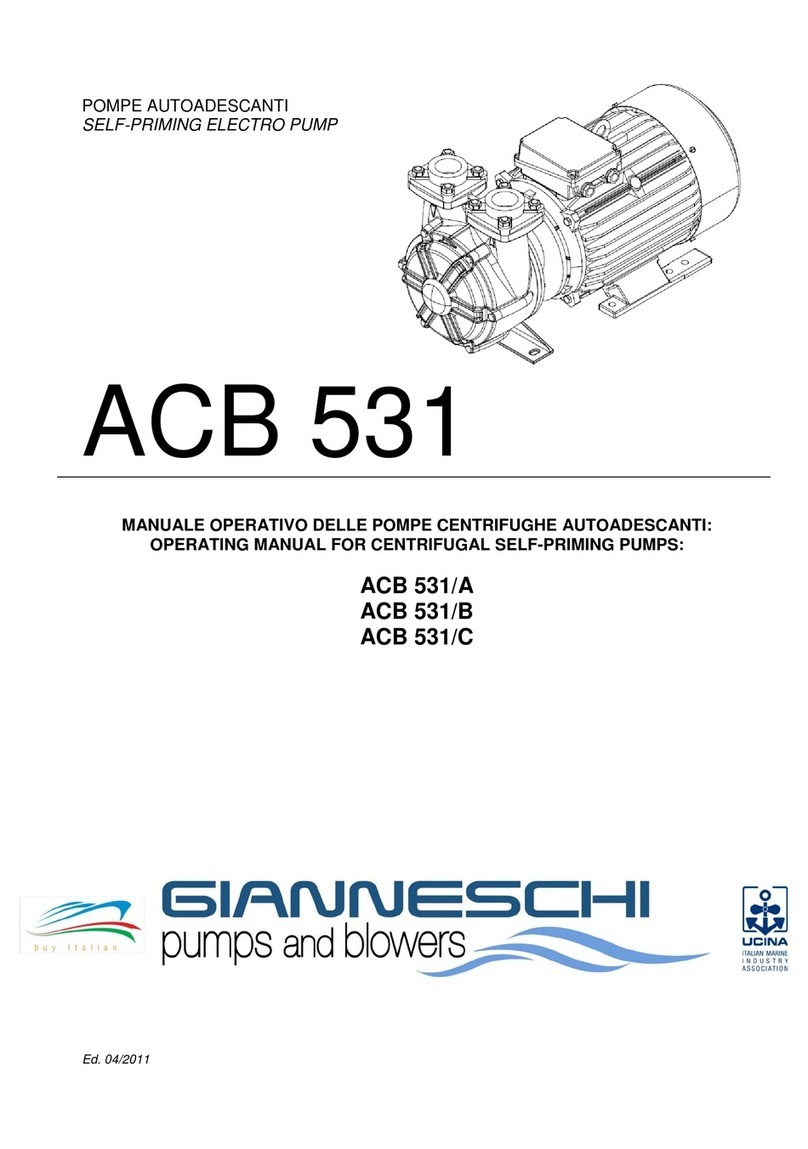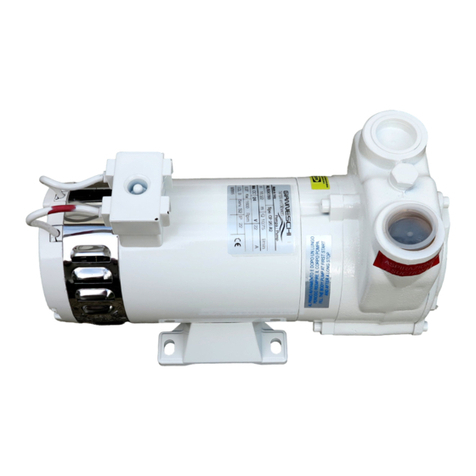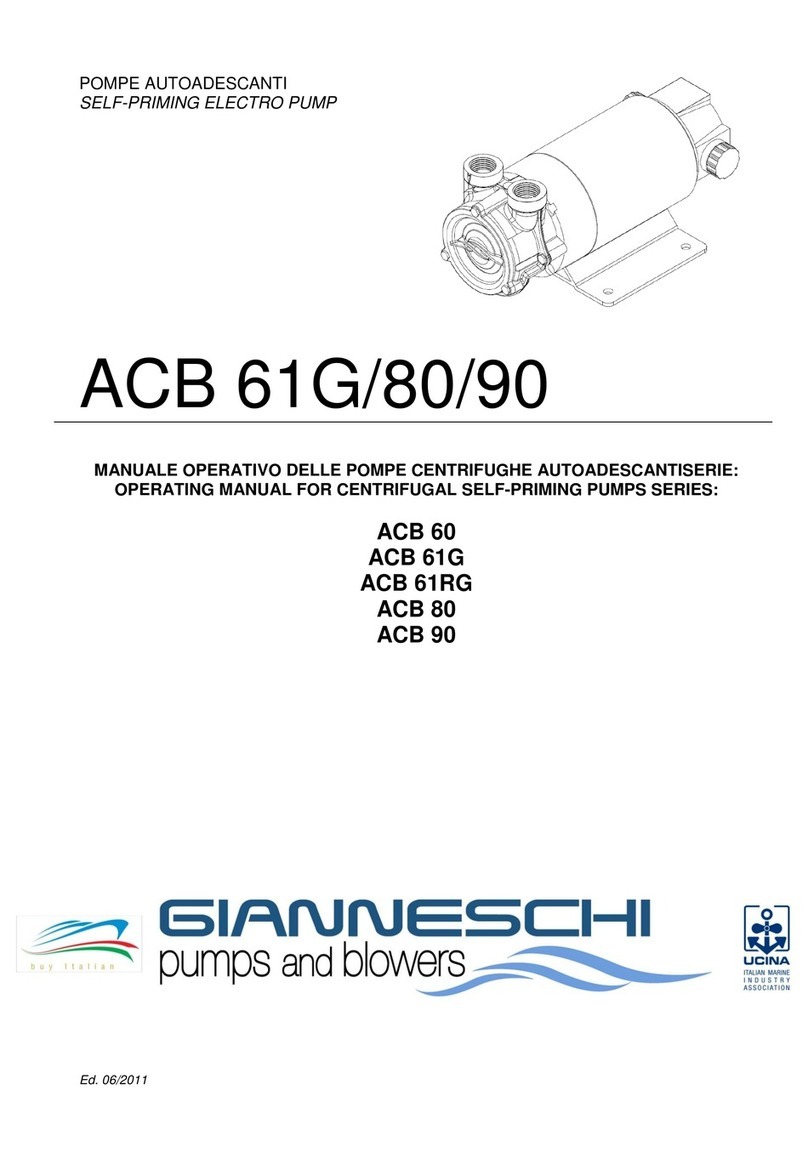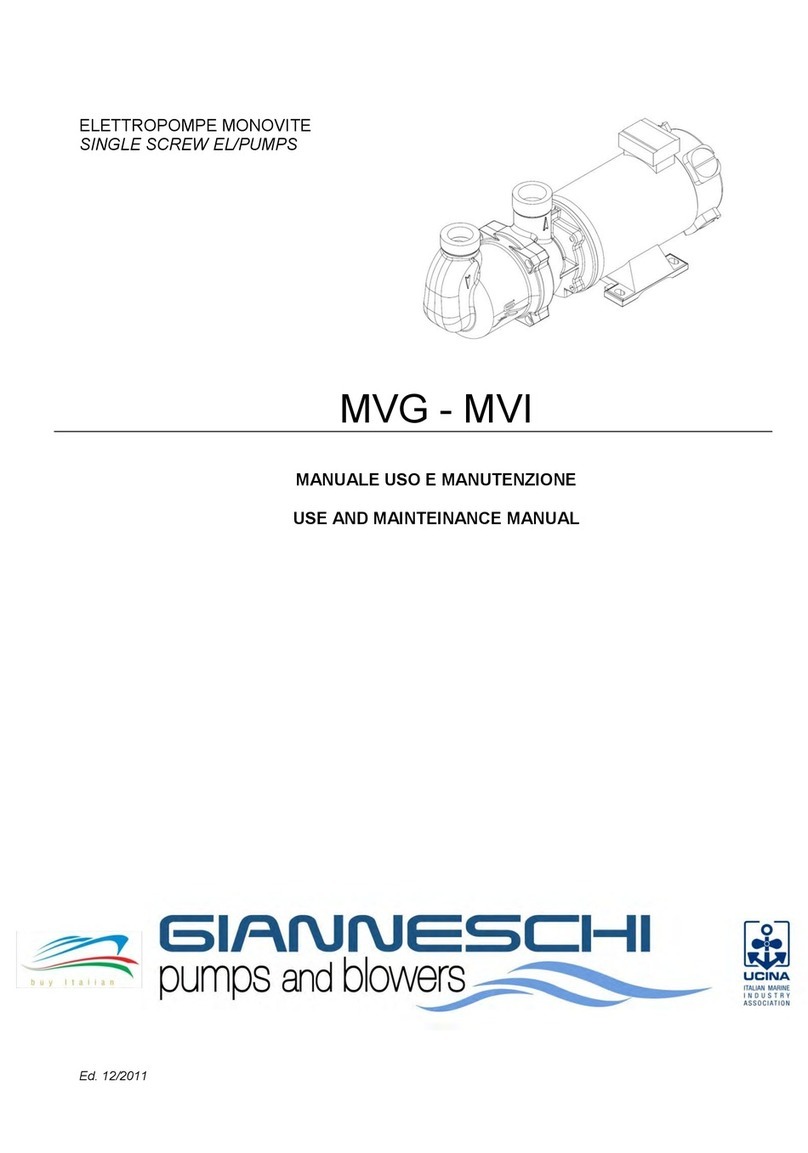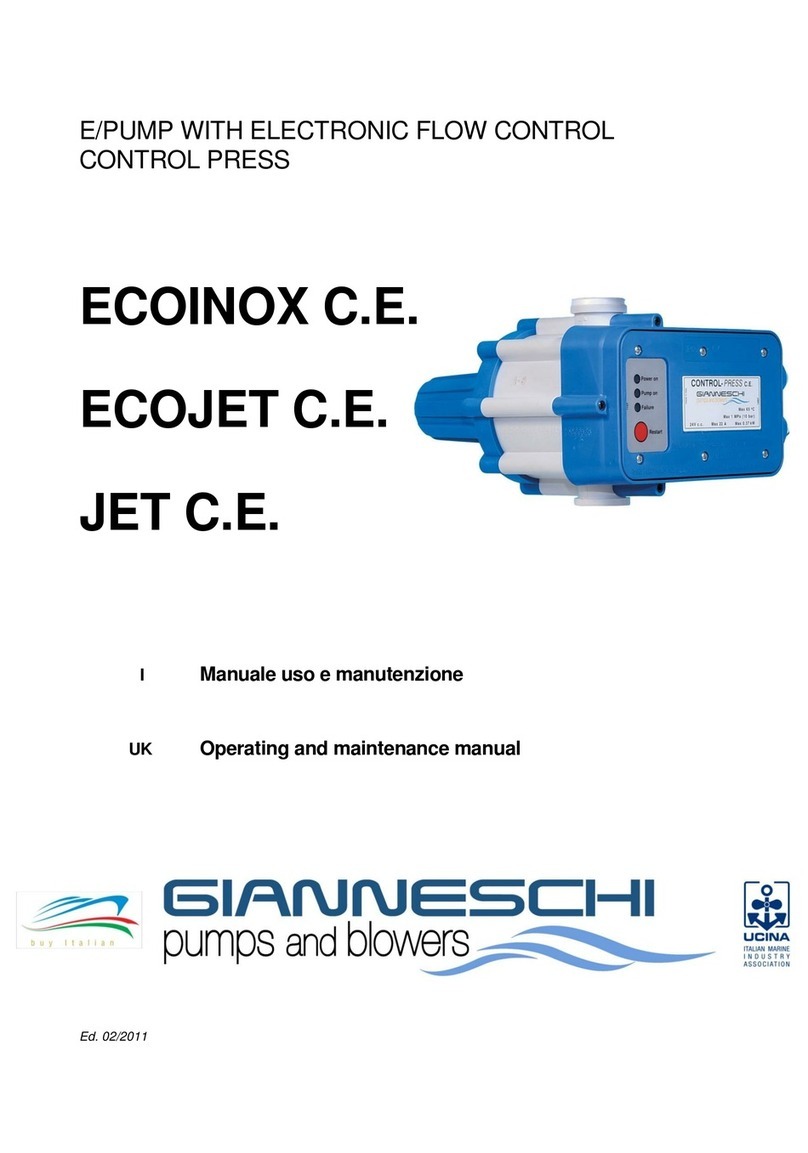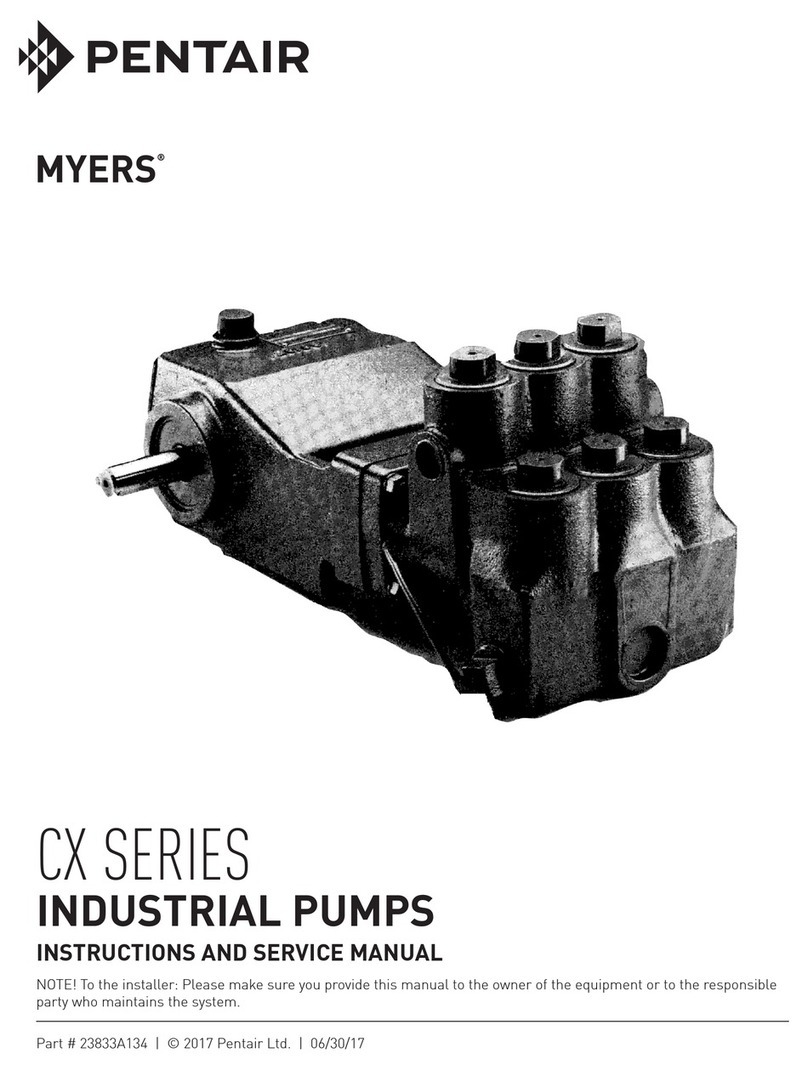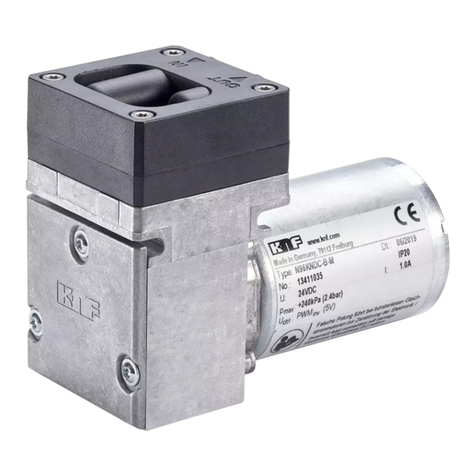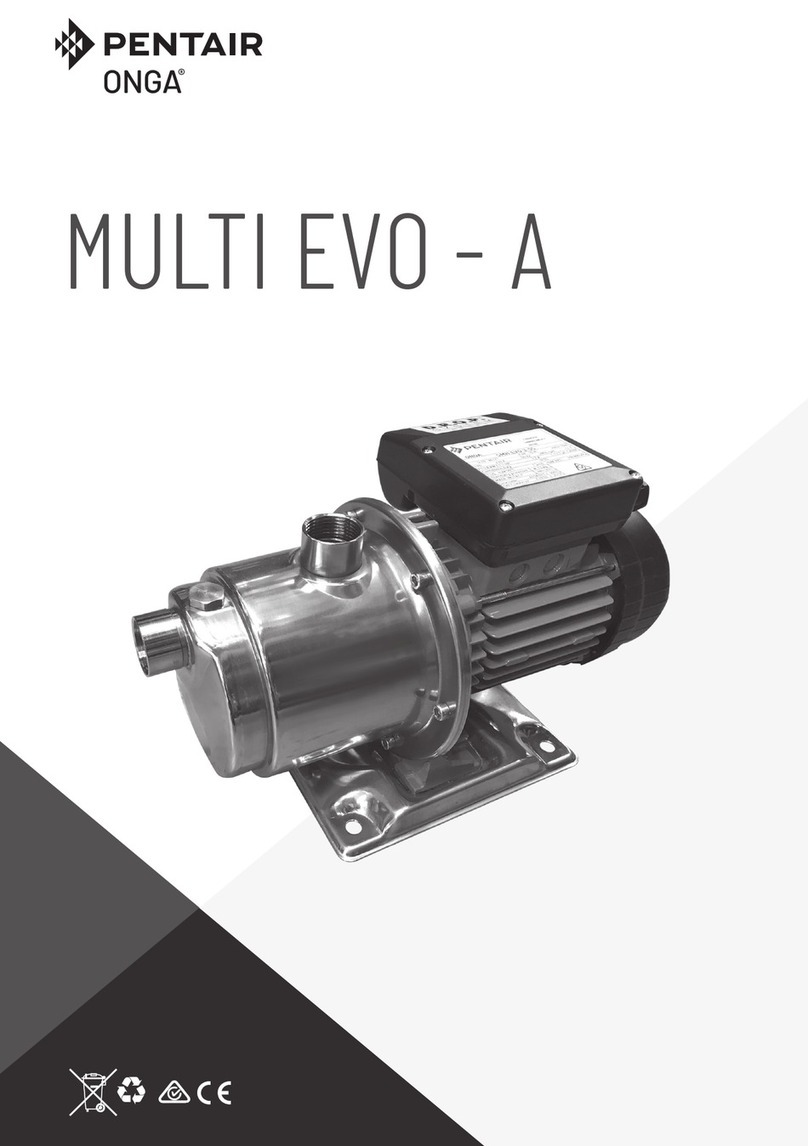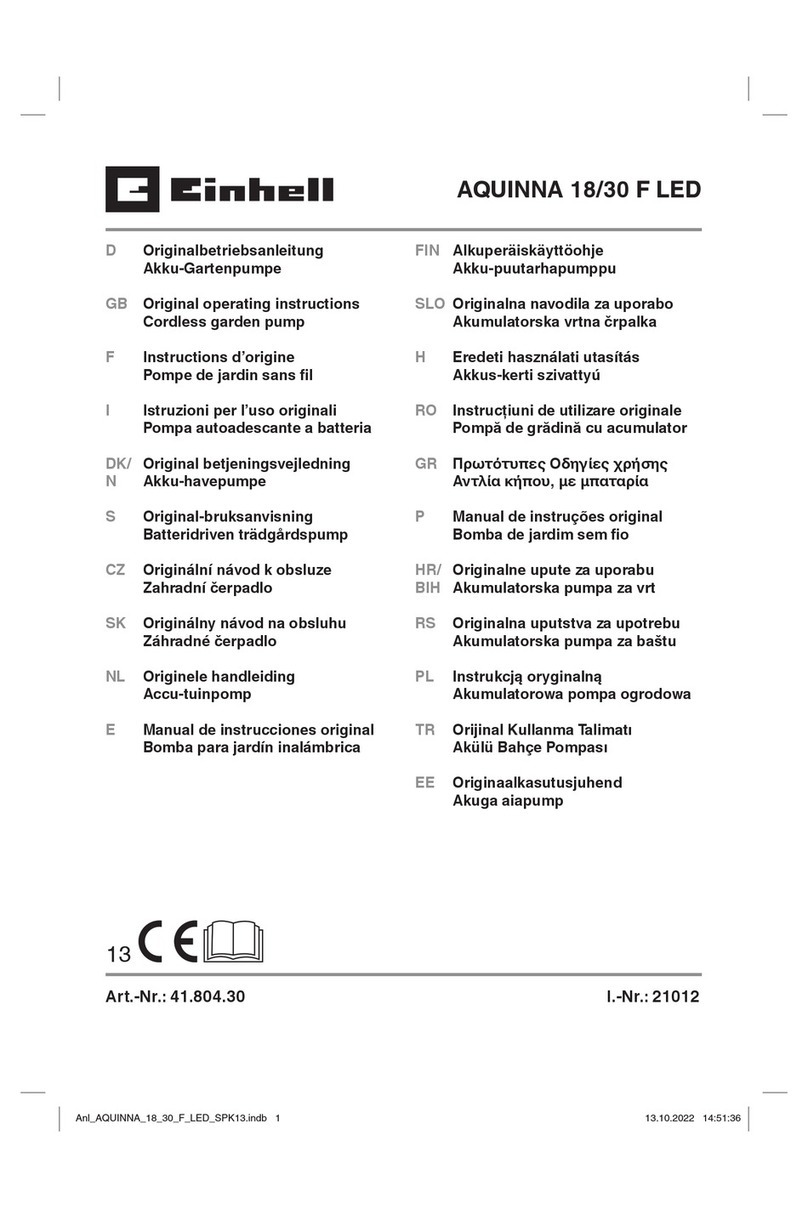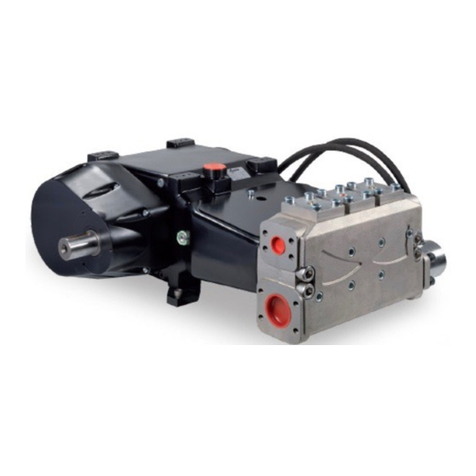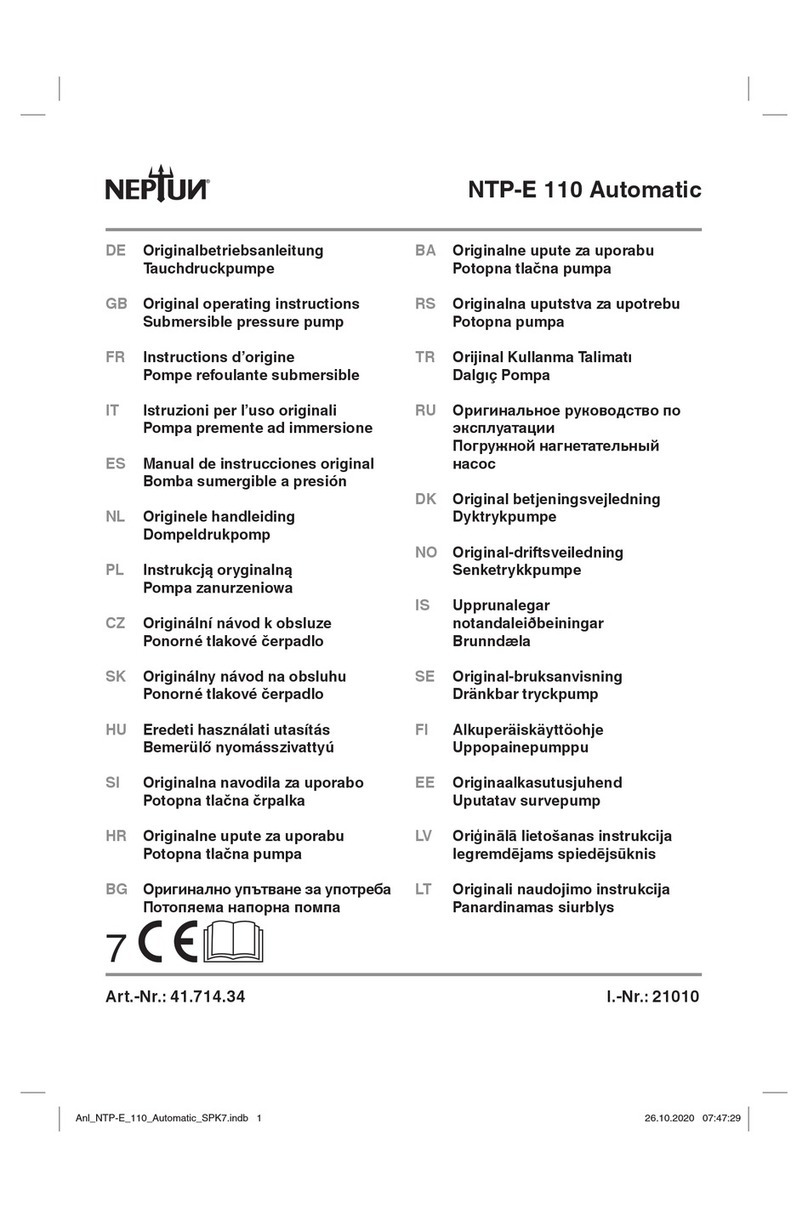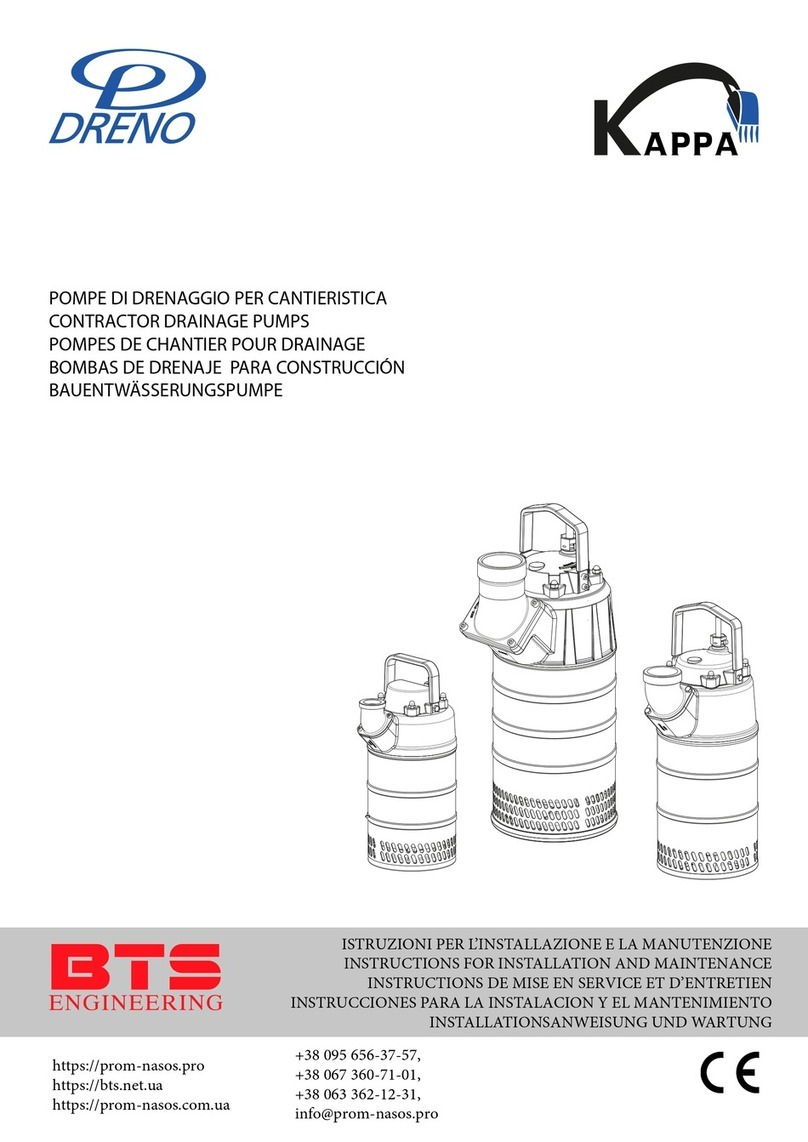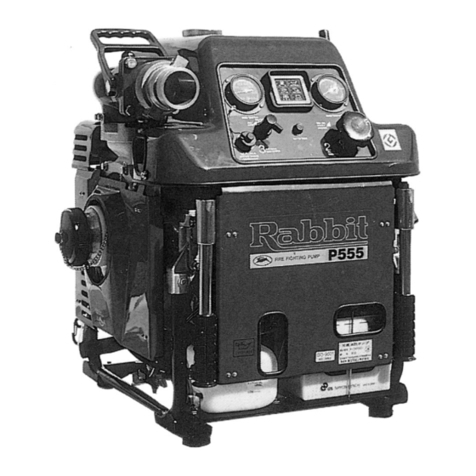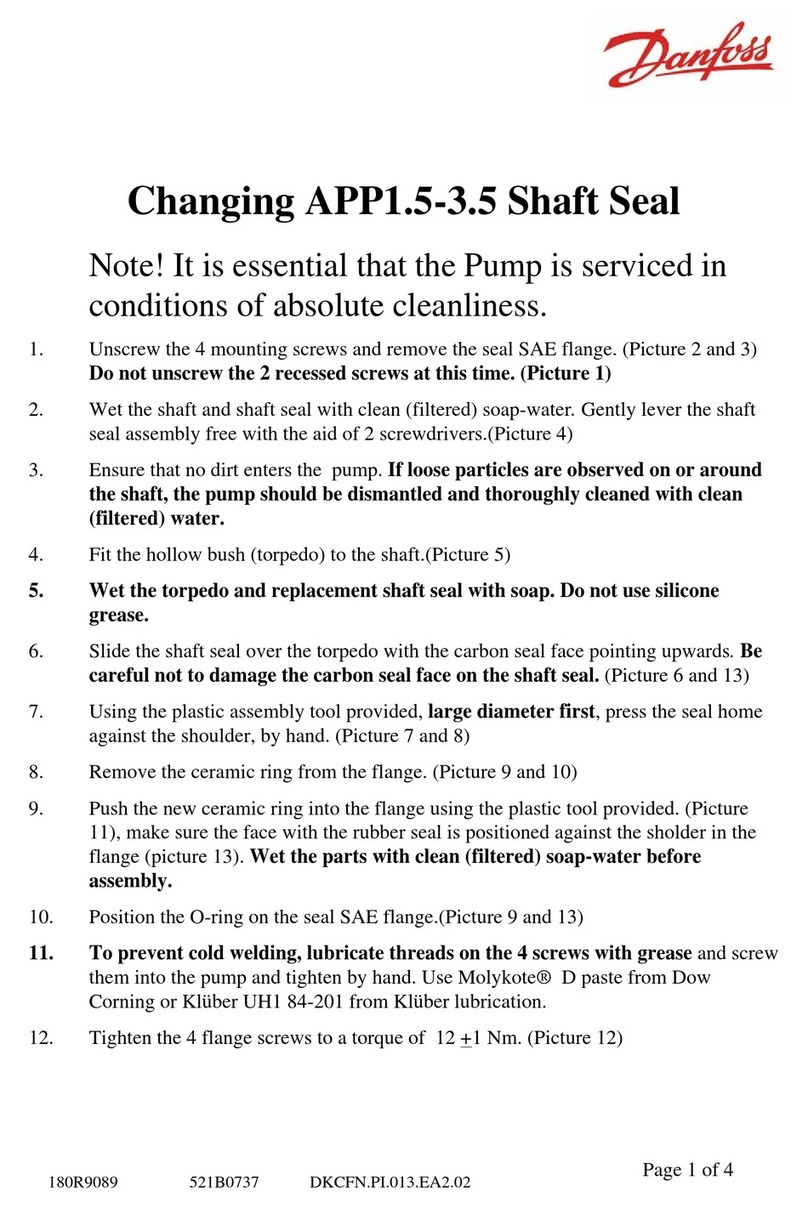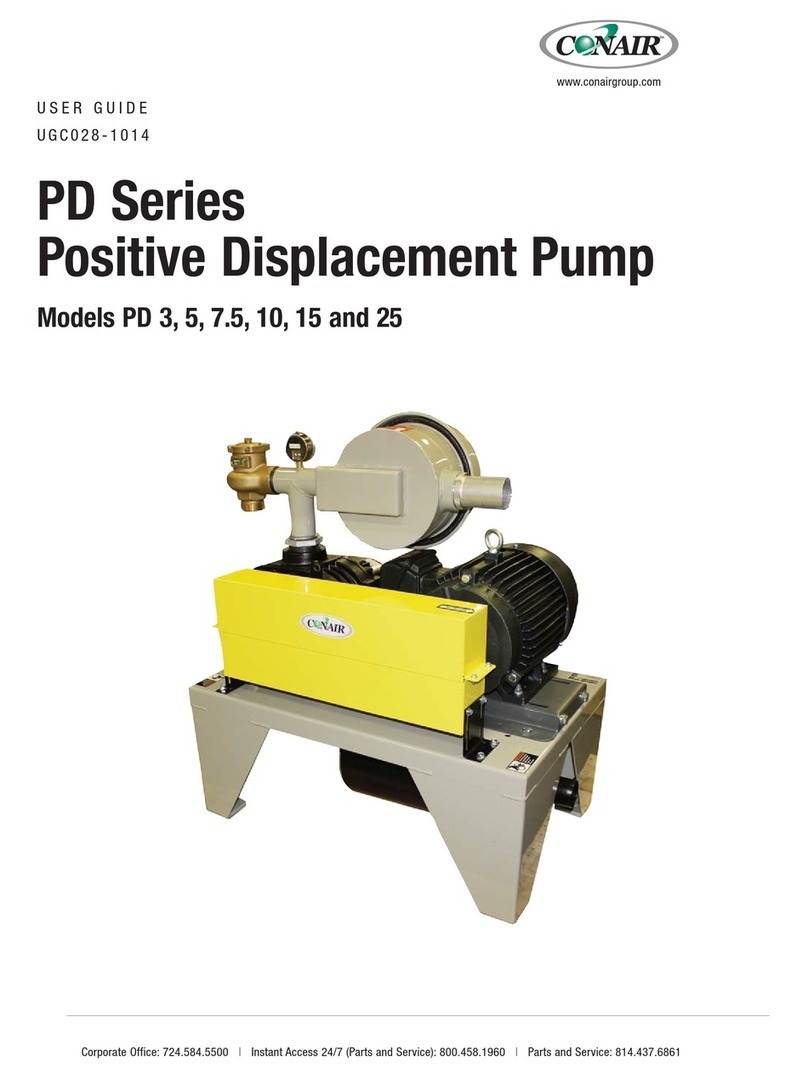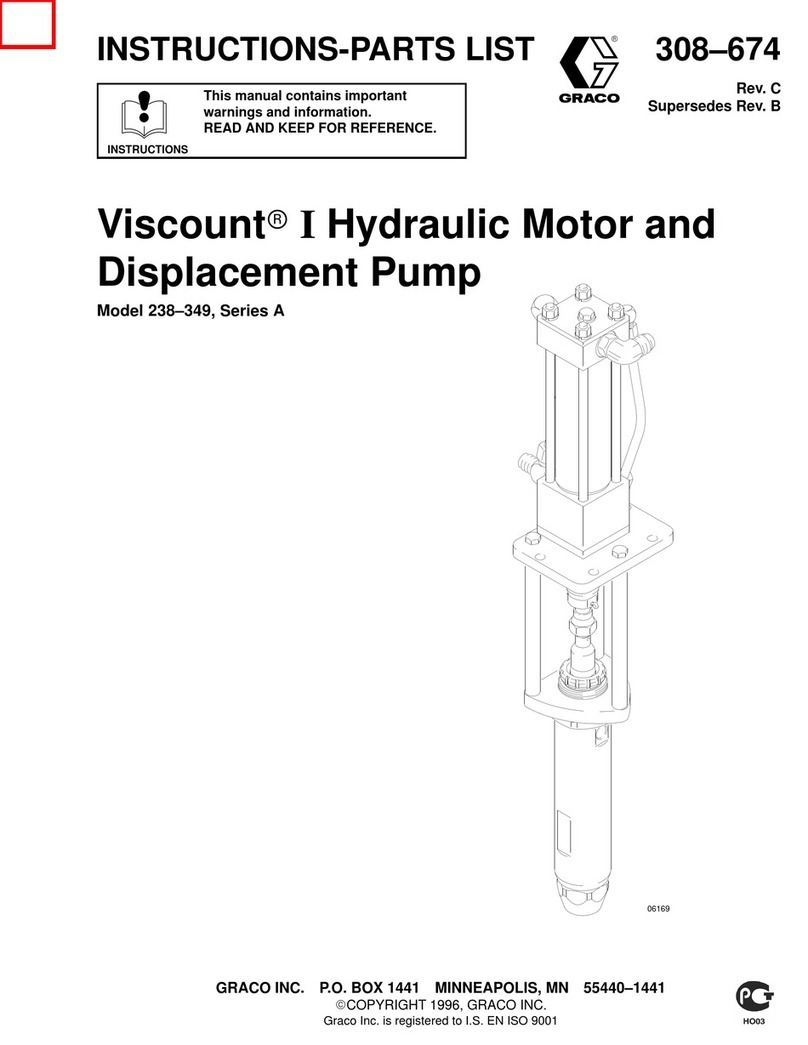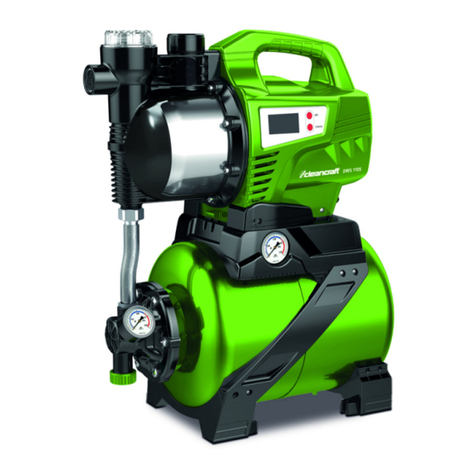
19
Gianneschi Pumps and Blowers S.r.l.
www.gianneschi.net
3.2.2 PIPING INSTALLATION
All piping must be independently supported, accurately aligned and preferably connected to the pump by
a short length of flexible piping to reduce stress on the pump head.
Ensure that pipes are fully sealed with jointing compound to the pump ports.
Pumps are supplied with threaded ports.
Check that suction and delivery pipes are correctly connected to pumps ports.
All pipes and containers connected to the pump must comply with the regulations and must be cleaned,
tension- free and intact.
Never draw piping into place by forcing at the flanged connections of the pump. This may impose
dangerous strains on the unit and cause misalignment between pump and driver;
Install the pipes well anchored on their own supports near to inlet and outlet points of the pump to avoid
their transmitting any vibration;
The pump should not have to support the weight of the pipe or compensate for misalignment;
For flanged connections, use only fasteners of the proper size and material;
WARNING
The nominal diameter of the pipes and of the connections built into the system
shall be the same size or larger than the nominal inlet and outlet diameters of the pump.
To avoid wrong functionality on suction side, the suction pipe sizes must be at least
as large as the pump suction connection.
It is recommended to install a valve on delivery line. This valve is required to regulate flow passage
and/or to isolate the pump for inspection and maintenance service.
To reduce the water hammer phenomena it is suggested to install a dampening arrangement on the
piping.
3.2.3 SUCTION PIPES
The length of the suction pipe should be as short as possible. If suction pipe length exceeds 10 meters, or
if many concentrated losses due to elbows or section decrease along the pipe are present, it is suggested to
use a pipe with a diameter greater than diameter suction port of the pump (suction pipe suction
port). Smaller diameters may cause losses of performances, while higher diameters may causes a low self-
priming capability.
Inside suction pipe, the fluid speeds recommended are up to 1.5 m/s. However, the speed shall not be
lower than 0.5 m/s to avoid deposits into the pipe.
The pipe must not trap air pockets that may cause intermittent pump operation. For this reason, suction
pipe must be completely air-tight, without “gooseneck” and with continuous upward slope toward pump
inlet. Avoid sharp bends as possible.
To avoid pump damaging it is suggested to install a strainer along suction line.
All curves, elbows, valves and fittings installed on suction pipe create pressure loss. For this reason we
suggest to verify if losses are not likely to jeopardize pump operation
A vacuum gauge is recommended where pump performance needs to be closely monitored as well a non-
returned valve and sluice valve.
3.2.4 DELIVERY PIPES
Delivery pipe should be air-tight.




















